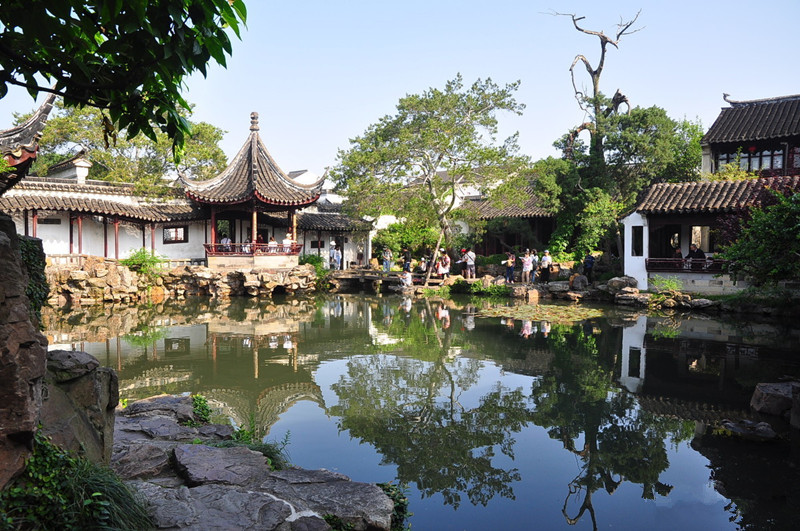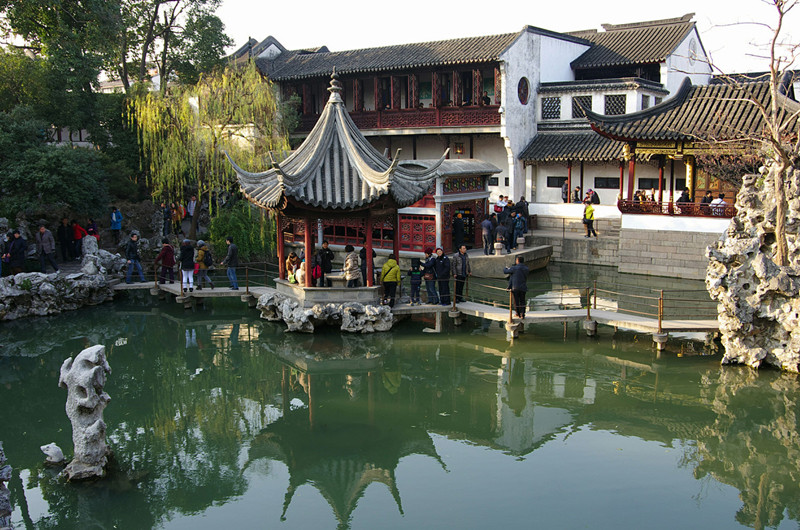
Classical Gardens of Suzhou

The gardens of Suzhou "represent the development of Chinese landscape garden design over more than two thousand years," and they are the "most refined form" of garden art.
Type: Gardens
Chinese Name: 苏州古典园林
Location: (中国江苏省苏州市姑苏区东北街178号)
Where is Classical Gardens of Suzhou?
The Classical Gardens of Suzhou are a group of gardens in Suzhou region, Jiangsu province, China.
Why is Classical Gardens of Suzhou So Special?
1. These gardens, most of them built by scholars, standardized many of the key features of classical Chinese garden design with constructed landscapes mimicking natural scenery of rocks, hills and rivers with strategically located pavilions and pagodas.
2. The gardens of Suzhou “represent the development of Chinese landscape garden design over more than two thousand years,” and they are the “most refined form” of garden art.
History of Classical Gardens of Suzhou
Spanning a period of almost one thousand years, from the Northern Song to the late Qing dynasties. Most of the gardens were built for private use by aristocrats and rich businessmen. Their design went through an active period during the Ming Dynasty. By the time of the latter years of the Qing Dynasty, a large number of classical gardens were spread across Suzhou as well as its suburbs.
Main Attractions of Classical Gardens of Suzhou
Ten of them are still in a good state of preservation, including the Humble Administrator’s Garden, the Lingering Garden, the Master of Nets Garden, the Villa with Embracing Beauty, the Canglang Pavilion, the Lion Grove Garden, the Garden of Pleasance, the Couple’s Retreat Garden and others.
- Humble Administrator’s Garden is the largest and most prestigious garden in Suzhou. With an area of 5.2 hectares, it is able to include magnificent halls, delicate pavilions, lush flowers, zigzagging bridges, bamboo groves and fragrant lotus ponds, from which you could admire the never-ending designs.
- Originally built in the Ming Dynasty and improved to its present layout in the Qing Dynasty, Lingering Garden is a classic example of the Qing Dynasty’s garden landscaping. Lingering Garden is one of the best preserved gardens in Suzhou, and praised as one of China’s four famous gardens, along with the Humble Administrator’s Garden, the Summer Palace in Beijing, and Chengde Summer Palace.
- Canglang Pavilion or Surging Waves Pavilion is a classical garden built in 1044 during the Song Dynasty. Different from Suzhou’s other gardens, which are usually surrounded by a high wall, Canglang Pavilion is situated by the side of a lake to its north and faces a miniature mountain to its south.
- Lion Grove Garden was first constructed in 1342 AD by the Buddhist Tianru to commemorate his master. Among the masses of classical gardens of Suzhou, the Lion Grove Garden stands out for the curiously shaped rockeries. The name of the garden stems from the 500 stones resembling lions in diverse postures, sitting, standing, sleeping, playing, roaring, dancing etc.
- Built in 1180 during the Southern Song Dynasty, the Master of the Nets Garden is the smallest yet the most delicate landscape garden in Suzhou City.This garden consists of a residential quarter and the garden proper. At each turn, there is an elegant picture of pavilions, rocks, trees, and water.
 Recommended Tour Packages
Recommended Tour Packages
- 1 Day Suzhou Garden Group Tour from Shanghai
- 2 Days Suzhou Gardens Highlights Tour
- 4 Days Suzhou Gardens and Zhouzhuang Water Town Tour
- 1 Day Suzhou Gardens Highlight Tour
- 1 Day Suzhou Tour with Rickshaw Riding
- 16 Days China Highlight Tour with Sichuan Panda and Suzhou Gardens
- 6 Days Shanghai-Suzhou-Hangzhou Tour by Speed Train
- 9 Days Beijing-Xian-Shanghai-Suzhou-Shanghai Small Group Tour
- 6 Days Nanjing Suzhou Hangzhou Shanghai Tour
 Recommended Tour Packages
Recommended Tour Packages











